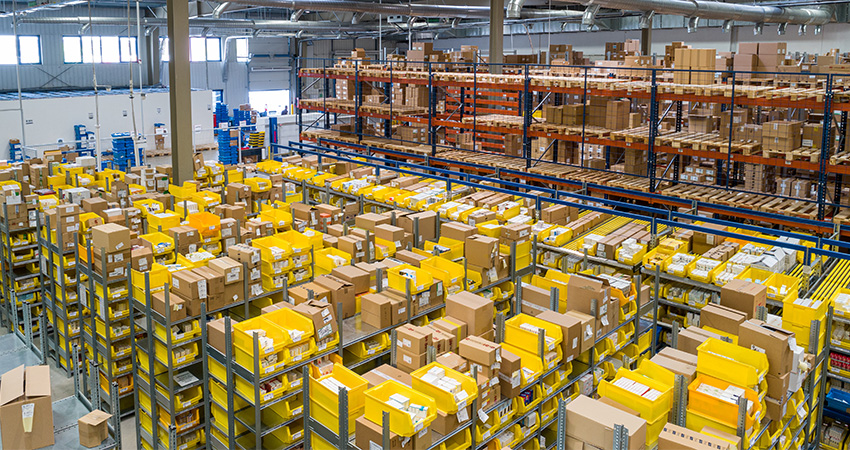Absolute productivity has declined in many ecommerce fulfillment centers because productivity has not kept up with the rate of increased costs. As an example, since the 1990s, labor rates have increased from around $5 per direct labor hour to $12 nationally for FC workers. Some larger companies are paying $18 to $20 per hour in some markets. Many expect to see the federal minimum wage be increased to $15.
By contrast, units of work produced in many companies remained flat or the percentage of productivity improvement did not keep pace with costs.
With that in mind, here are 6 ways to become more efficient and reduce costs in your ecommerce fulfillment operations:
Fulfillment Center Assessment
The place to start is measurement and analysis. To determine if your ecommerce fulfillment center is as efficient possible, start with an operations assessment. This takes a quantitative and qualitative look at productivity and accuracy in a systematic way.
An effective assessment enables you to measure fulfillment center productivity and other important metrics to identify patterns and trends. Once you gather the data, develop options for improvement and draft an action plan. Different options may have different costs and return on investment.
Use the Cube
Total occupancy costs (space and utilities) can be 20% or more of the total cost per order, excluding freight.
One of the single biggest culprits in optimization of your ecommerce fulfillment center asset is not adequately using available cubic space. When you look up, is there “honeycombing” of space? Is your WMS aiding you in recombining bulk locations?
Another common inefficiency is not using overhead space in areas where there are manual operations such as kitting and assembly, packing and returns processing. Use racking, mezzanines, multilevel order picking modules and powered conveyor placement to increase space utilization.
Take Advantage of Barcode Technology
Barcodes let you track the what, who, where and when for all activities within the four walls. You can track products and orders, verify accuracy, speed processes, gain visibility and eliminate paperwork and errors. Develop an ROI study to show where savings can be gained. Learn how to reduce costs by maximizing use of barcode technology from receiving through shipping.
Develop a Vendor Compliance Program
Everything in your ecommerce fulfillment center is impacted by vendors. Most SMB ecommerce companies are still not developing and enforcing vendor compliance programs that detail expectations and specifications.
In the typical operation without vendor compliance policies or EDI, the costs will be surprising, especially as your workforce has to take the time to correct their errors. At $12 per hour, when you add benefits, recruitment and training costs, the fully loaded cost per hour is $20.
Suppose a vendor’s receipt has a packaging mistake and you have to correct 1,000 units received before they’re ready for sale. At a minute per piece, the $20 wage means the vendor’s error costs you 33 cents per unit.
In purchasing and accounting, what increased costs are incurred to resolve paperwork and vendor problems? What problems are there with purchase order, receipt and invoice matching within acceptable tolerances so the invoice can be paid? This applies to merchandise, supplies, freight and logistics services.
Do a study of a busy week and determine the cost of noncompliance. It may surprise you.
Measure, Report Performance Metrics to Employees
The old axiom, “You can’t improve what you don’t measure” holds for improving labor efficiency. The simple act of measuring operating metrics and reporting the results to employees will result in an improvement even if you do nothing else with the data.
In ecommerce fulfillment, order picking and packing are generally the largest labor areas. As much as 70% of a picker’s work hours can be spent in travel time.
Set up productivity measurements in units and cost for all fulfillment center departments, including receiving, picking, packing and returns). Here is a detailed workbook for all major fulfillment center department productivity measures
Reduce Inbound, Outbound Freight Costs
Inbound and outbound freight costs continue to erode profitability. Inbound freight typically ranges from 3.5% to 5% of net sales. As a cost of goods sold factor, it affects the gross margin earned.
In most operations, the cost of outbound freight now exceeds the sum of all other ecommerce fulfillment center costs: Management, direct and indirect labor, total occupancy costs including material handling, sortation and conveyance system and packing.
Regarding a percentage of net sales for outbound, it is not as tight a range. That’s because average order value and the average weight of shipped orders varies widely. Let’s say two companies have an AOV of $100. An apparel company may have a shipped order average cost of $10. By comparison, a home goods company with heavy items and dimensional freight might average $20. How much “free” shipping” is given away to get the order varies depending on the company and its competition.
There are 11 major things we see ecommerce companies doing to lower freight. Unless it’s a very large company with its own logistics department, most cannot do everything necessary to stabilize or reduce costs. Consider hiring a consultant with a proven track record. Many transportation services have an immediate payback.
Conclusion
Improving these 6 areas will dramatically impact ecommerce fulfillment costs and your ability to provide an outstanding customer experience. Do a checkup each year as part of your ongoing operational improvement process.
Brian Barry is President of F. Curtis Barry & Company

